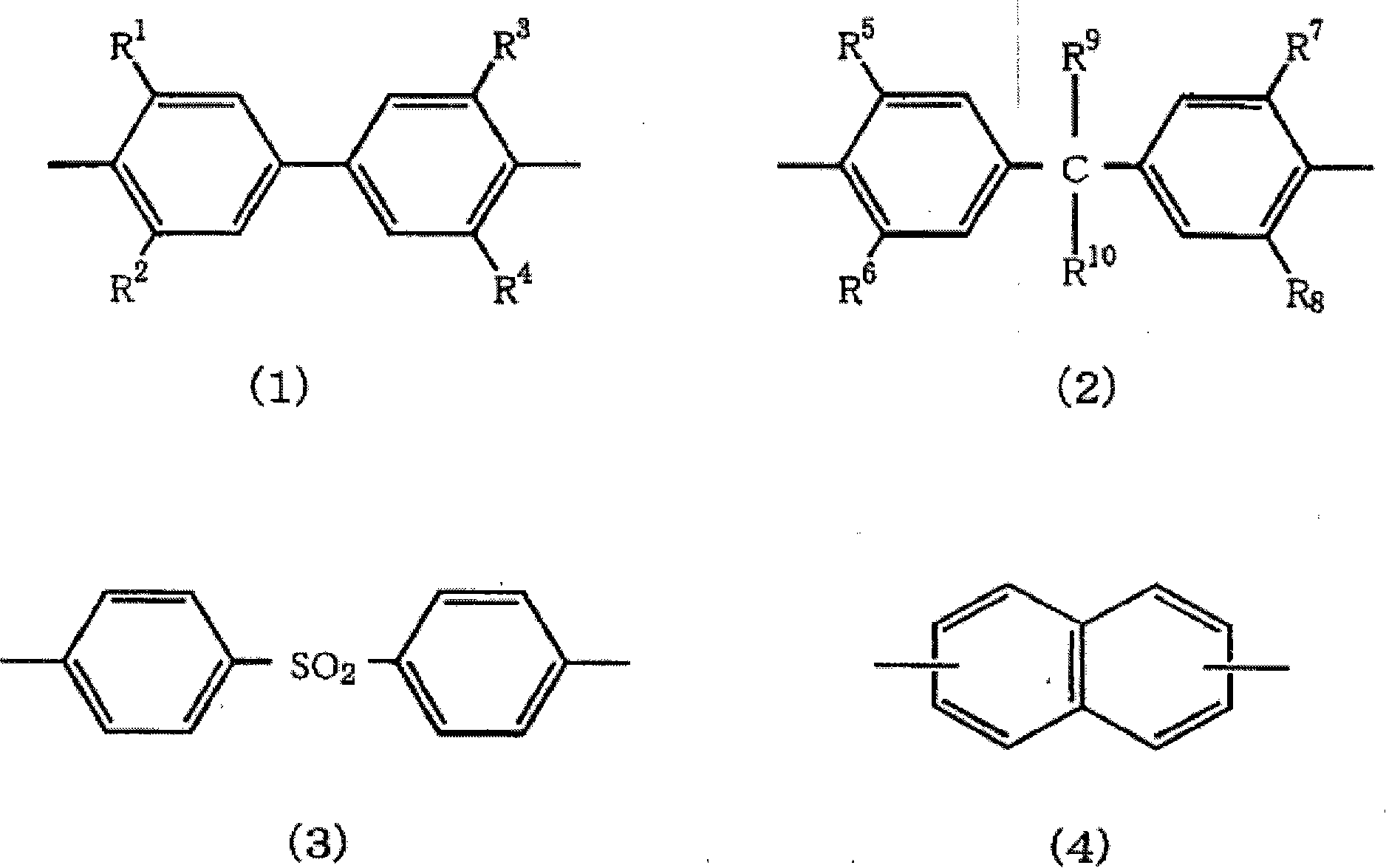Light solidifying/heat solidifying resin composition, condensate of the same and printing circuit board
A resin composition, thermosetting technology, applied in printed circuit, printed circuit manufacturing, optics, etc., can solve the problems of lack of electrical characteristics, intolerance to high temperature heat treatment, insufficient heat resistance, etc., and achieve small curing shrinkage , Excellent PCT resistance, excellent adhesion effect
- Summary
- Abstract
- Description
- Claims
- Application Information
AI Technical Summary
Problems solved by technology
Method used
Image
Examples
Embodiment
[0137] Hereinafter, the present invention will be specifically described by showing examples and comparative examples, but of course the present invention is not limited to the following examples.
Synthetic example 1
[0138] Synthesis Example 1: Synthesis 1 of Carboxyl Group-Containing Photosensitive Resin (A-1)
[0139] Add 2200 g of cresol novolac type epoxy resin (manufactured by Nippon Kayaku Co., Ltd., EOCN-104S, softening point 92° C., epoxy equivalent 220), 134 g of dimethylol propionic acid, 648.5 g of acrylic acid, and methylhydroquinone 4.6 g, 1131 g of carbitol acetate and 484.9 g of solvent naphtha were heated to 90° C. and stirred to dissolve the reaction mixture. Next, the reaction liquid was cooled to 60° C., 13.8 g of triphenylphosphine was added, heated to 100° C., and reacted for about 32 hours to obtain a reactant having an acid value of 0.5 mgKOH / g. Next, 364.7 g of tetrahydrophthalic anhydride, 137.5 g of carbitol acetate, and 58.8 g of solvent naphtha were added thereto, heated to 95°C, allowed to react for about 6 hours, and cooled to obtain a solid content of acid A carboxyl group-containing photosensitive resin with a price of 40 mgKOH / g and a non-volatile content ...
Synthetic example 2
[0140] Synthesis Example 2: Synthesis 2 of Carboxyl Group-Containing Photosensitive Resin (A-1)
[0141] In a four-necked flask equipped with a stirrer and a condenser, 2,200 g of cresol novolak-type epoxy resin (manufactured by Nippon Kayaku Co., Ltd., EOCN-104S, softening point 92° C., epoxy equivalent 220) was added, and propylene glycol was added. 2072 g of methyl ether acetate was dissolved by heating, and then 4.6 g of methyl hydroquinone and 13.8 g of trimethylphosphine were added. This mixture was heated to 95-105 degreeC, and 504 g of acrylic acid and 415 g of p-hydroxyphenethyl alcohol were dripped slowly, and it was made to react for about 16 hours. The reactant was cooled to 80-90° C., 730 g of tetrahydrophthalic anhydride was added thereto, allowed to react for about 8 hours, and cooled to obtain a solid component with an acid value of 70 mgKOH / g and a nonvolatile content of 65%. Carboxyl photosensitive resin. Hereinafter, this reaction solution is called varnis...
PUM
| Property | Measurement | Unit |
|---|---|---|
| acid value | aaaaa | aaaaa |
| softening point | aaaaa | aaaaa |
| softening point | aaaaa | aaaaa |
Abstract
Description
Claims
Application Information
 Login to View More
Login to View More - R&D
- Intellectual Property
- Life Sciences
- Materials
- Tech Scout
- Unparalleled Data Quality
- Higher Quality Content
- 60% Fewer Hallucinations
Browse by: Latest US Patents, China's latest patents, Technical Efficacy Thesaurus, Application Domain, Technology Topic, Popular Technical Reports.
© 2025 PatSnap. All rights reserved.Legal|Privacy policy|Modern Slavery Act Transparency Statement|Sitemap|About US| Contact US: help@patsnap.com

